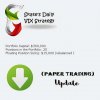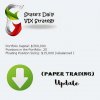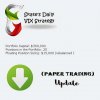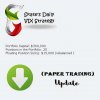- Joined
- 3 May 2019
- Posts
- 6,398
- Reactions
- 10,157
It appears that if extrapolated out further over time, an extra small edge is found?I'm calling it - "line ball"
Trading the strategy a day late made little difference over a short 18 week period.
What if.... signals are generated on a Monday evening, and taken/traded on Tuesday open.
(My hypothesis... unproven)
You must enjoy a long weekend Skate?
Cheers.

















